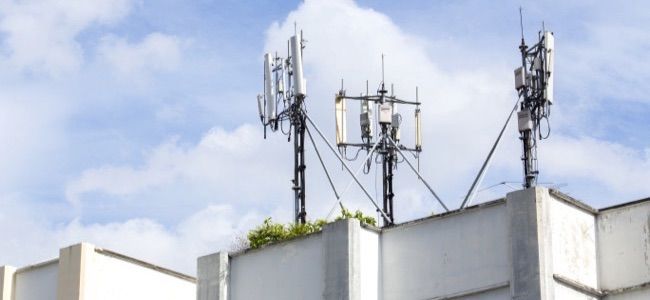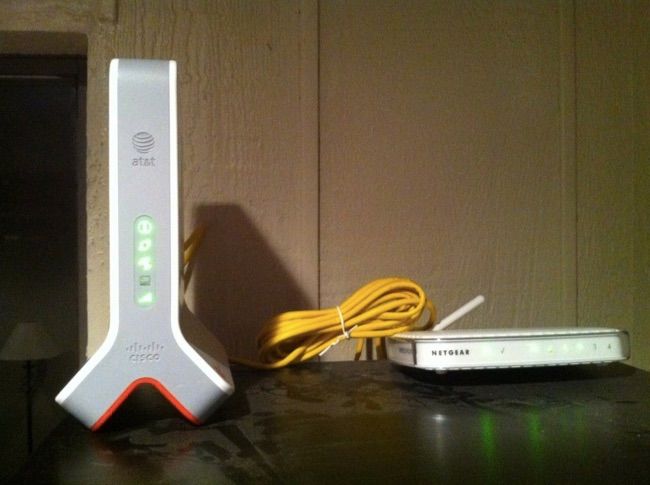Quick Links
Many cellular carriers offer "microcell" devices -- T-Mobile is calling them "CellSpot" devices, but they're the same thing. These function as small cellular towers, but they use your home Internet connection and anyone can connect to them.
We're not saying everyone should avoid these devices, but many people should. In particular, these are a bad idea in dense urban areas. If your neighbors live miles away, you won't have as much to worry about.
Microcells vs. Repeaters
Cellular service providers offer a few different types of devices to improve your home cellular signal. One is a "repeater" or "signal booster." This type of device takes a cellular signal you can already receive and amplifies it.
For example, let's say you have one or two bars of coverage at home, but only near a window. You could install a repeater near that window. The repeater would use that cellular signal and create a strong signal throughout your house. Your phones would connect to the repeater, and the repeater connects to your cellular provider's nearby tower. The repeater device can be properly positioned and will receive a better signal than your handheld phone. This is a fine approach -- if you do have a bar or two of coverage.
Microcells are completely different. You can use these even where you don't have any cellular signal. For example, let's say you're in the middle of the desert with no cellular signal at all, but you do have an Internet connection. You can purchase a microcell and plug it into your home router.
The microcell will create a cellular signal in your home -- and nearby, depending on how strong it is. Your phone and other cellular-enabled devices can connect to that cellular network -- they'll automatically see the microcell as a cell tower and connect to it. Phone calls, text messages, and cellular data will then be transferred over your home Internet connection.
You Can't Control Who Connects Over Your Home Internet Connection
This is the main sticking point. A microcell -- including T-Mobile's "4G LTE CellSpot" -- uses your home Internet connection to transfer data.
There's no way to prevent people from connecting to your microcell. Really, it's not even your microcell, you should think of it as the cellular service provider's tower. Anyone nearby using a phone or other device on that cellular service provider's network will have their devices automatically connect to the microcell because it's a strong signal.
Update: It's worth noting that AT&T microcells have an "approved user list" based on phone numbers, so as long as you setup that list, you won't experience this problem. (PDF link to instruction manual)
This won't be a big problem if you are trying to expand your cell phone service in the middle of the desert, of course. But, if you're in an urban area -- an apartment building would be even worse -- many devices nearby will begin automatically connecting to your microcell as soon as you plug it in.
This will result in additional data transferred over your home network. Depending on how much Internet speed you're paying for and how many people are nearby, this may actually slow down your Intenret connection. And, with Comcast slowly rolling out data limits across the US, this will run up your data usage. If someone is connected to your microcell while they binge-watch Netflix over a cellular data connection, your Internet service provider may actually bill you extra.
Data you use while connected to your microcell will count toward your limit, too. Let's say you connect to your microcell and watch enough streaming videos to use 2 GB of data. That 2 GB of data will actually be transferred over your home Internet connection, but your cellular service provider will also count you as using 2 GB of data on their network.
Try Wi-Fi Calling Instead
The alternative is simply using a modern wireless router with modern smartphones. Modern smartphones -- both iPhones and Android phones -- now support Wi-Fi calling. Connect your phone to the Wi-Fi network and you'll be able to send and receive phone calls and text messages as if you were connected to a cellular network. If guests visit, give them access to your Wi-Fi network and they'll be able to use the same features. Better yet, this works for smartphones on all cellular networks -- they can all connect to Wi-Fi. Microcells will create signals specific to that cellular provider's network.
Sure, this does mean you'll need Wi-Fi-calling enabled devices -- and your guests will, too. But it also means that you won't be offering up your home Internet connection for your cellular service provider to gorge itself on.
When Microcells Make Sense
Again, microcells aren't always a bad idea. If you don't have many neighbors nearby, a microcell would be a fine addition to your home. Your cellular service provider may even offer you a subsidized one if you have trouble recieving a strong signal in your area.
But, if you live in a more dense urban area or an apartment building, it just doesn't make sense to get a microcell when ISPs like Comcast are working on rolling out data caps. You don't want to share that limited home Internet connection with everyone nearby.
Ultimately, the decision is up to you. But, if all your devices support Wi-Fi calling, there's no real upside to getting a microcell over just connecting to your wireless router.
The only "downside" to using Wi-FI instead is that your guest will have to connect to the Wi-Fi. But this is also what prevents everyone nearby from using your Internet connection.
Image Credit: Wesley Fryer on Flickr




